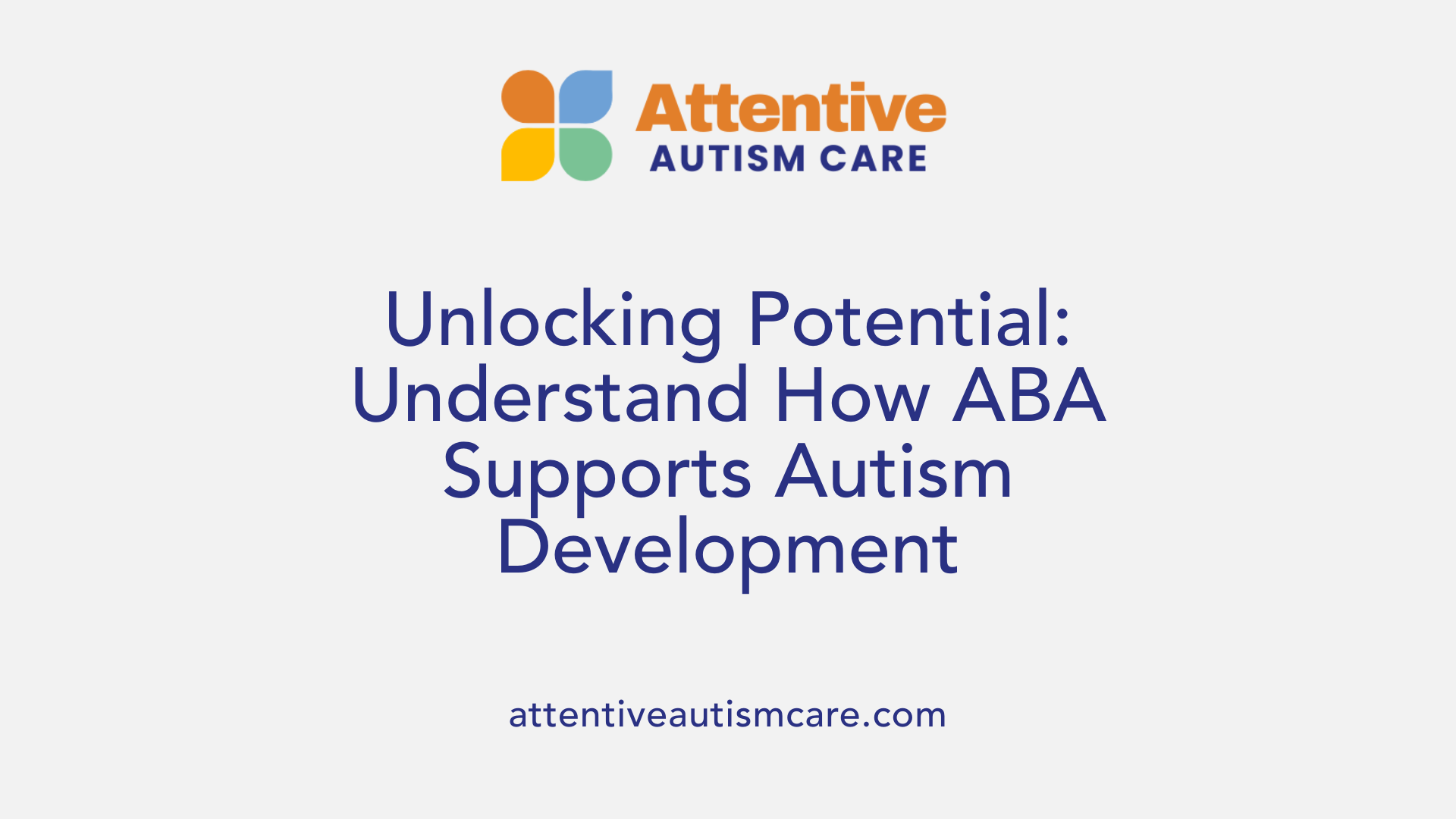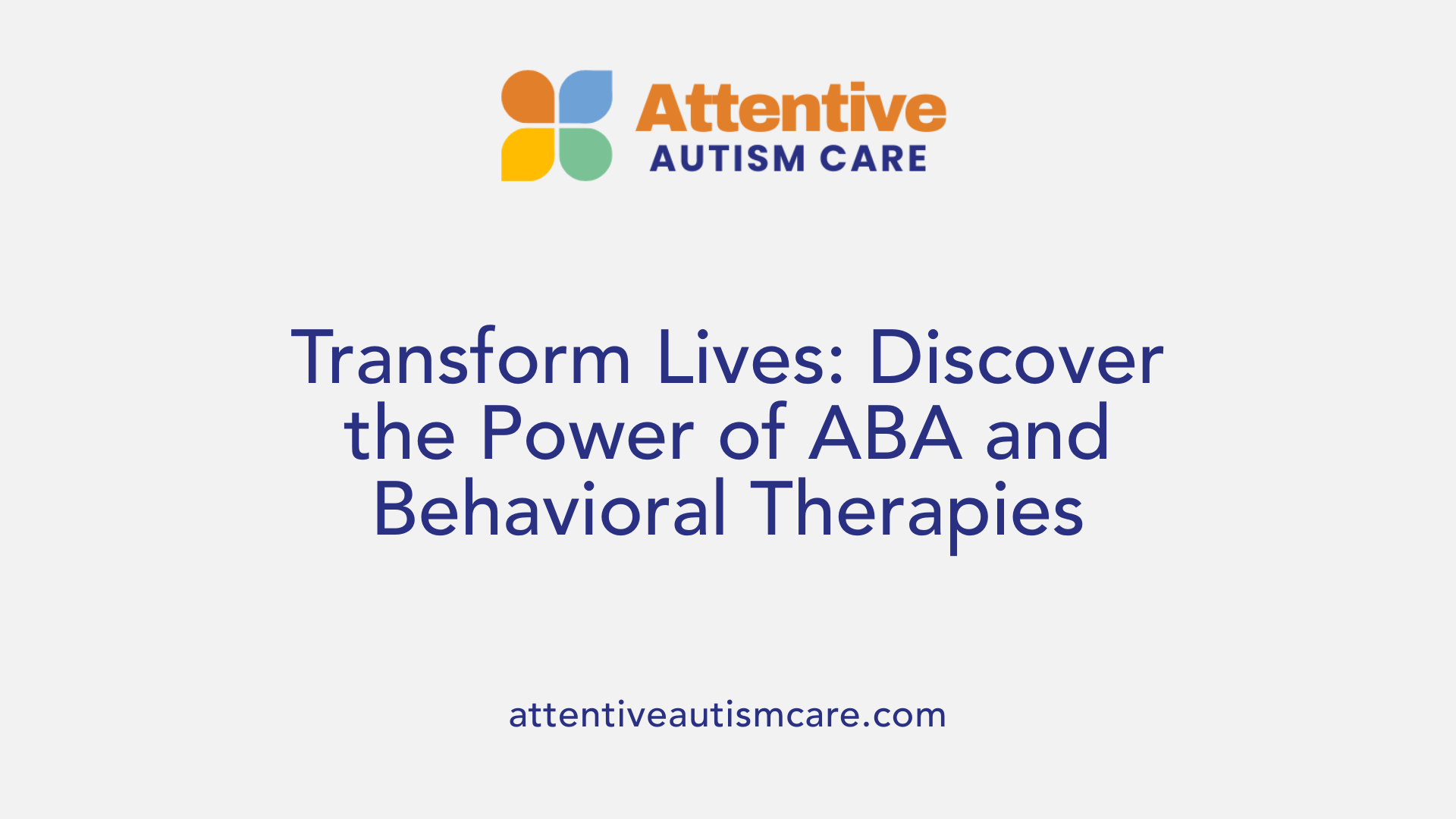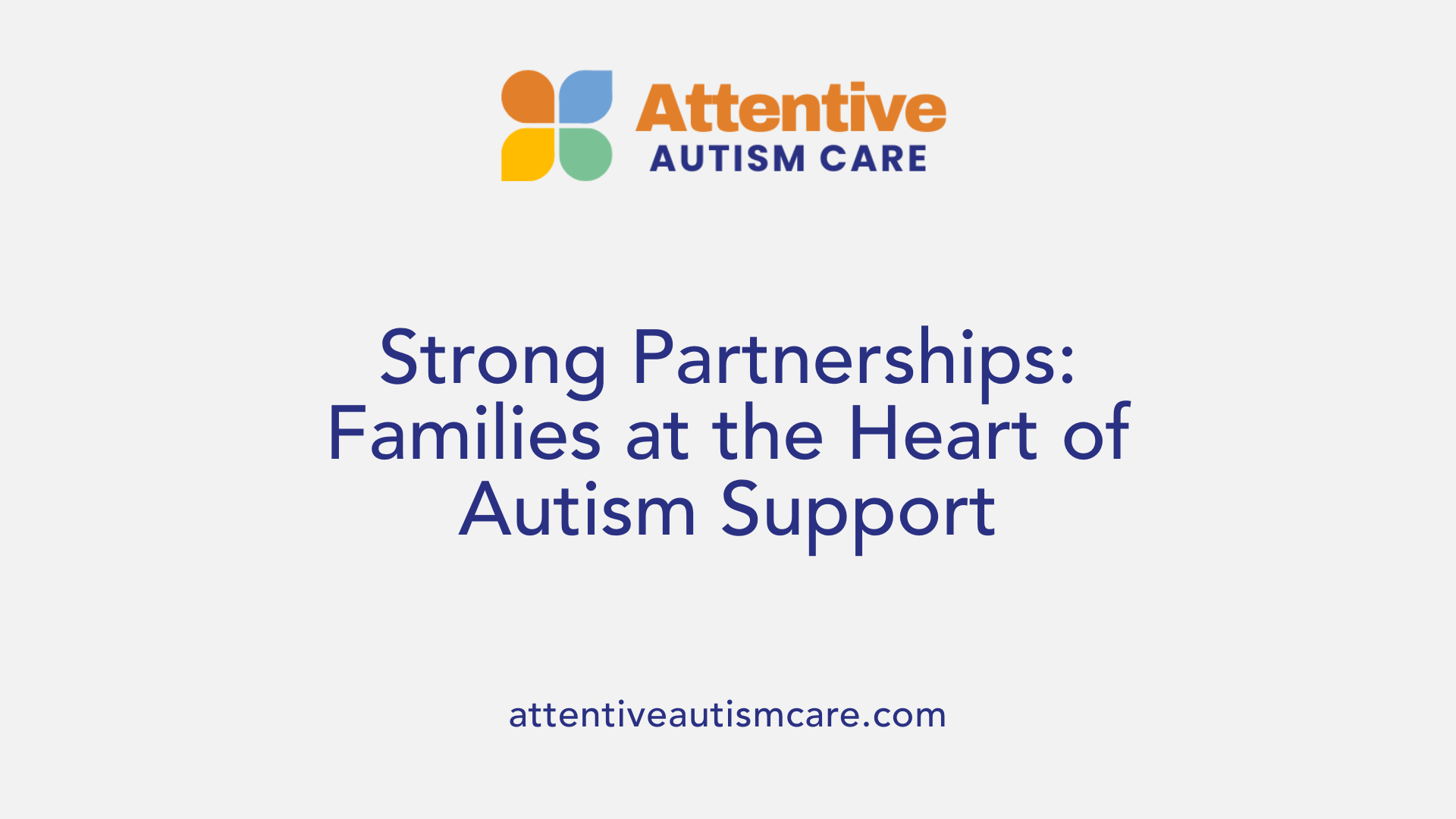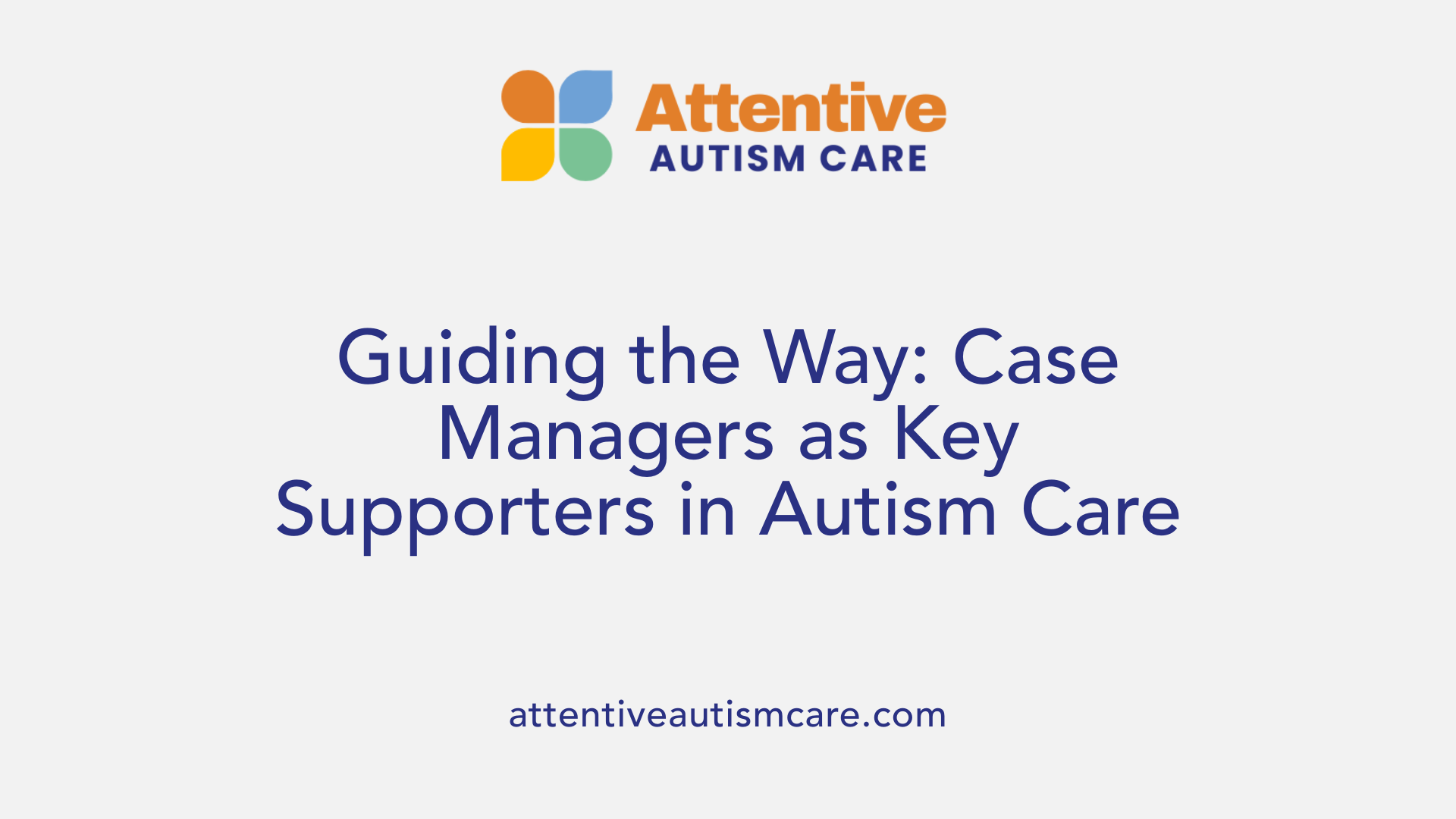The Role of Care Managers in Autism Life Planning
Navigating the Journey: How Care Managers Transform Autism Life Planning

Understanding the Integral Role of Care Managers in Autism Support
As the prevalence of autism spectrum disorder (ASD) continues to rise, families face an increasingly complex landscape of therapeutic options, healthcare systems, and support services. Care managers act as vital navigators on this journey, guiding families through assessment, intervention, and community resources to foster optimal outcomes. This article explores how care managers support life planning for individuals with autism, emphasizing the synergy between behavioral therapies and coordinated care.
Demystifying Applied Behavior Analysis (ABA) Therapy in Autism Support

What is Applied Behavior Analysis (ABA) therapy and how is it used to help individuals with autism?
Applied Behavior Analysis (ABA) therapy is a scientifically supported approach that applies behavioral learning principles to support individuals with autism spectrum disorder (ASD). It aims to teach essential skills and reduce challenging behaviors by reinforcing positive actions and minimizing unwanted ones. ABA focuses on important areas such as communication, social interaction, self-care, and adaptive behaviors.
Core techniques in ABA
ABA therapy uses various techniques like positive reinforcement—rewarding desirable behaviors to increase their frequency—and prompting and fading to guide skill acquisition. Therapists also conduct ongoing data collection and functional behavior assessments to tailor interventions specifically to each individual’s needs. This ensures the therapy adapts as the individual progresses.
Settings and delivery of ABA therapy
ABA interventions can be delivered across diverse settings including the home, school, and community environments. Qualified practitioners, such as Board Certified Behavior Analysts (BCBAs) and Qualified Autism Service Professionals, provide tailored programs. Caregiver training and involvement are key components, enabling parents to effectively implement strategies between sessions.
Research evidence supporting ABA effectiveness
Decades of research back the effectiveness of ABA, showing improvements in language, social communication, attention, and cognitive functioning. Early and sustained ABA treatment is especially linked with positive outcomes. Programs often combine behavioral therapy with other supports like psychological testing, family therapy, and medication management to enhance overall functioning.
ABA has become a cornerstone of autism intervention due to its personalized, evidence-based approach and its proven track record in helping individuals with ASD lead more functional, enriched lives.
The Experts Behind ABA: Who Provides Specialized Behavioral Therapy for Autism?
Roles of BCBAs and Licensed Behavior Therapists
Applied Behavior Analysis (ABA) therapy is chiefly delivered by Board Certified Behavior Analysts (BCBAs) and licensed behavior therapists. These professionals are specially trained to design and implement intervention programs tailored to meet the unique needs of children with autism. Their work focuses on enhancing communication, social skills, imitation, and play while reducing challenging behaviors.
Settings Where Professionals Operate
Behavioral therapists and BCBAs offer services in various settings, including autism treatment clinics, educational institutions, community centers, and the child’s home environment. This diversity allows interventions to be applied where the child is most comfortable, promoting skill generalization across contexts.
Collaboration Among Providers
Effective ABA therapy requires close collaboration between BCBAs, therapists, caregivers, and other healthcare providers. The Autism Care Management Program exemplifies this by integrating utilization management, clinical support, and ongoing case monitoring alongside therapy delivery, ensuring cohesive and continuous care.
Training and Certification Requirements
Qualified Autism Service Professionals delivering ABA must be certified through the Behavior Analyst Certification Board (BACB). This certification ensures they have the expertise to conduct assessments and provide evidence-based, customized behavioral interventions. Licensing for behavior therapists varies by state but typically includes specific training in behavioral analysis principles.
| Provider Type | Role | Certification/Training |
|---|---|---|
| Board Certified Behavior Analysts (BCBAs) | Develop and oversee ABA programs | BACB certification |
| Licensed Behavior Therapists | Implement ABA strategies directly with clients | State licensure and specialized behavior analysis training |
| Caregivers (trained) | Support and carry out daily interventions at home | Training through caregiver-mediated programs like Project ImPACT |
These specialized experts form the backbone of effective behavioral therapy for autism, ensuring interventions are evidence-based, consistent, and responsive to each child's needs.
Key Benefits of Behavioral Analysis-Based Therapies for Individuals with Autism

What are the main benefits of behavioral analysis-based therapies for individuals with autism?
Behavioral analysis-based therapies, especially Applied Behavioral Analysis (ABA), provide comprehensive support that enhances various skills for individuals with autism spectrum disorder (ASD). One major benefit is the enhancement of communication and social skills. Interventions like Naturalistic Developmental Behavioral Interventions (NDBIs) and caregiver-mediated models such as Project ImPACT and JASPER focus on improving social engagement, language, imitation, and play, boosting meaningful interactions.
How do these therapies reduce challenging behaviors?
ABA uses functional behavior assessments to understand challenging behaviors' underlying causes and applies function-based strategies to replace them with adaptive behaviors. Evidence-based programs like RUBI, PTR, and AIM HI train both caregivers and therapists to use techniques such as modeling, coaching, and feedback, leading to significant decreases in disruptive or harmful behaviors.
In what ways do behavioral therapies promote independence and adaptive functioning?
These therapies guide individuals in mastering everyday skills including sleep routines, hygiene, and self-care, fostering greater independence. Customized interventions by certified professionals ensure targeted support adapted to each individual’s needs, promoting successful integration at home, school, and community settings.
Why is early and intensive intervention important?
Research underscores that starting therapy early—ideally before age 4—and maintaining consistent, sustained intervention yields better developmental outcomes. It maximizes improvements in language development, emotional regulation, and social interaction, setting a strong foundation for lifelong learning and growth.
What are the positive long-term outcomes?
When behavioral therapies include active caregiver involvement and ongoing support, individuals with ASD often experience improved communication abilities, reduced behavioral challenges, and enhanced quality of life. Early and intensive ABA interventions contribute to better academic and social outcomes, increasing the potential for meaningful participation in society.
| Benefit Area | Description | Examples/Programs Included |
|---|---|---|
| Communication & Social Skills | Improves interaction, language, and play | NDBIs: Pivotal Response, Early Start Denver, Project ImPACT, JASPER |
| Reduction of Challenging Behavior | Decreases problematic behaviors via assessment and intervention | RUBI, PTR, AIM HI |
| Independence & Adaptive Skills | Develops daily living and self-care skills | ABA delivered by BACB-certified professionals |
| Early & Intensive Intervention | Early start correlates with better long-term outcomes | Emphasizes therapy before age 4 |
| Long-Term Positive Outcomes | Enhances quality of life and social integration | Caregiver training and ongoing clinical support |
Customizing Behavioral Therapies: Tailoring ABA to Individual Needs
How do professionals tailor behavioral analysis therapies to meet the needs of each individual with autism?
Behavioral therapies like Applied Behavioral Analysis (ABA) are carefully customized to fit the unique needs of each individual with autism spectrum disorder (ASD). The process begins with a comprehensive assessment to evaluate the child's strengths, challenges, and specific developmental areas requiring support, including communication, social skills, and daily living tasks.
Based on these assessments, professionals design individualized treatment plans with clear, measurable goals. These plans may incorporate various behavioral interventions such as discrete trial training, natural environment teaching, and environmental adaptations to suit the child's learning style and environment.
Family involvement is an essential part of personalization. Caregivers are trained to implement strategies consistently at home, which helps reinforce learning and ensures that interventions align with family routines and preferences. This collaboration supports generalization of skills beyond therapy sessions.
Continuous monitoring of the child’s progress allows therapists to adjust techniques and goals dynamically. This ongoing evaluation ensures that the therapy remains effective and responsive to evolving needs.
By integrating comprehensive assessments, individualized planning, adaptive behavioral techniques, and family collaboration, professionals create a tailored approach that maximizes positive outcomes for children with ASD.
Empowering Families and Caregivers: Their Critical Role in Behavioral Therapies

What role do families and caregivers play in behavioral analysis therapies for autism?
Families and caregivers are indispensable partners in behavioral analysis therapies for autism spectrum disorder (ASD). They receive specialized training and coaching through caregiver-mediated interventions, such as Project ImPACT and JASPER, which teach them effective strategies to improve social engagement, communication, imitation, and play.
How do caregivers implement strategies at home and in the community?
Trained caregivers actively apply behavioral techniques like prompting, reinforcement, and structured play in everyday environments. This consistent application helps children with ASD practice new skills across settings beyond clinical sessions, fostering more natural learning experiences.
How is progress reinforced and skills generalized through caregiver involvement?
Caregivers reinforce progress by creating daily routines, using visual supports, and engaging children in regular practice of newly learned behaviors. This hands-on involvement promotes the generalization of skills, ensuring children translate therapeutic gains to real-world activities.
How do caregivers collaborate with therapists to enhance outcomes?
Ongoing collaboration between caregivers and therapists is vital. Caregivers share observations and feedback that help therapists tailor interventions to fit the child's unique needs. Therapists provide coaching, modeling, and feedback to caregivers, building their confidence and effectiveness in delivering interventions.
In what ways does caregiver engagement improve therapy effectiveness?
Active caregiver participation accelerates skill acquisition, helps maintain behavioral improvements, and empowers families to support their child's independence. This partnership strengthens the overall impact of behavioral therapies and enhances the child's long-term developmental trajectory.
The Expanding Toolkit: Naturalistic Developmental Behavioral Interventions (NDBIs)
What are Naturalistic Developmental Behavioral Interventions (NDBIs)?
Naturalistic Developmental Behavioral Interventions, often abbreviated as NDBIs, are a group of strategies designed to support social communication skills in infants and children diagnosed with Autism Spectrum Disorder (ASD). These interventions blend developmental approaches with behavioral techniques, focusing on natural settings and everyday interactions to promote learning.
Examples of well-known NDBIs
Several established models fall under the NDBI umbrella, each offering unique methods to foster child development. Notable examples include:
- Early Start Denver Model (ESDM): Utilizes play and joint activities to encourage communication and social skills in young children.
- JASPER (Joint Attention, Symbolic Play, Engagement, and Regulation): Targets joint attention and play behaviors, promoting engagement with caregivers and peers.
- Project ImPACT: A caregiver-mediated approach that equips parents with strategies to improve social engagement, language, imitation, and play.
- Pivotal Response Treatment (PRT): Focuses on pivotal areas of a child's development, such as motivation and response to multiple cues, to boost overall social communication.
Focus on social communication in infants and toddlers
NDBIs primarily aim to enhance social and communication abilities from infancy through toddlerhood. These early ages are critical as young children benefit greatly from interventions integrated into their daily routines, allowing natural opportunities for learning and interaction.
The role of caregiver-mediated interventions
A defining characteristic of many NDBIs is active caregiver involvement. Caregiver-mediated interventions empower parents and family members to implement evidence-based strategies in everyday settings. By coaching caregivers, programs like Project ImPACT and JASPER ensure consistent reinforcement of skills, which leads to better outcomes.
Effectiveness in enhancing social engagement and play
Research underscores that incorporating caregivers into the intervention process significantly improves children's social communication, engagement, and play behaviors. These improvements can lead to stronger relationships and better adaptation in social environments.
| Intervention Model | Core Focus | Caregiver Role |
|---|---|---|
| Early Start Denver Model | Play-based social communication | Collaborate with therapists to extend learning |
| JASPER | Joint attention and play | Implement strategies to boost engagement |
| Project ImPACT | Language and imitation | Lead everyday routines reinforcing skills |
| Pivotal Response Treatment | Motivation and response cues | Support child motivation during interactions |
Addressing Challenging Behaviors: Functional Behavior Assessment and Intervention

What is the Purpose of Functional Behavior Assessment?
Functional Behavior Assessment (FBA) serves as a foundational step in behavioral interventions for children with Autism Spectrum Disorder (ASD). It systematically identifies the reasons behind challenging behaviors, helping to uncover what purpose these behaviors serve for the child. Understanding these causes enables tailored intervention strategies that effectively address the root issues.
How Are Causes of Behaviors Identified?
During an FBA, practitioners observe and analyze the context and specifics of the child's behaviors. This includes examining triggers, the behavior itself, and the consequences that might reinforce it. By gathering this detailed information, the assessment highlights patterns linking behaviors to their functions, such as seeking attention, avoiding tasks, or sensory regulation.
What Are Function-Based Intervention Strategies?
Function-based interventions directly respond to the insights gained through FBA. They focus on teaching adaptive behaviors to replace challenging ones and modifying the environment to reduce triggers. These strategies are personalized to meet each child's unique needs, making interventions more effective and sustainable.
How Are Reinforcement and Environmental Modifications Used?
Reinforcement involves encouraging desirable behaviors by providing positive outcomes, which increases the likelihood these behaviors will be repeated. Environmental modifications might include changing settings or routines to minimize stressors or barriers that contribute to challenging behaviors. Together, these methods create a supportive context that promotes positive behavioral change.
What Are Behavioral Analysis Training Models Like RUBI, PTR, and AIM HI?
Programs such as RUBI (Research Unit on Behavioral Interventions), PTR (Parent-Child Interaction Therapy), and AIM HI (An Individualized Mental Health Intervention) offer structured training for caregivers and therapists. These models emphasize behavior analysis techniques including modeling, coaching, and feedback. Their goal is to equip those involved in the child’s care with skills to decrease challenging behaviors effectively through consistent, evidence-based practices.
Innovations and Access: Leveraging Technology in Autism Behavioral Therapies
How are telehealth applications used in therapy delivery for autism?
Telehealth has become a crucial tool in delivering behavioral therapies for children with autism spectrum disorder (ASD). It allows therapists to remotely provide interventions such as Applied Behavioral Analysis (ABA) and Naturalistic Developmental Behavioral Interventions (NDBIs). By using video conferencing and digital platforms, therapists can coach caregivers and engage children directly without geographical constraints. This approach not only maintains continuity of care but also supports personalized therapy sessions in the child's natural environment.
What role do mobile apps play in supporting behavioral interventions?
Mobile applications complement therapy by offering caregivers and therapists interactive tools to track progress, practice strategies, and access educational resources. These apps often include features to reinforce positive behaviors, support communication development, and provide reminders for intervention steps. Some apps are designed specifically for caregiver-mediated interventions, enabling parents to implement evidence-based techniques consistently.
How does technology increase access for rural and low-resource families?
Technology mitigates traditional barriers such as distance, transportation, and limited local services by bringing expert support directly to the home. Families in rural or underserved areas can connect with certified professionals and receive training without the need for extensive travel. This expanded reach promotes early and sustained intervention, which is critical for improving outcomes in children with ASD.
What are the benefits and challenges of using technology in autism behavioral therapies?
Benefits include increased accessibility, flexibility in scheduling, reduced costs, and the ability to involve caregivers more actively in treatment. However, challenges remain such as variable internet connectivity, technology literacy gaps, and ensuring privacy and data security. Additionally, some families may find remote interactions less engaging or feel they require supplementary in-person support.
Through telehealth and mobile apps, the landscape of autism behavioral therapy is becoming more inclusive and adaptable, offering promising avenues to support children and families beyond traditional clinical settings.
Supporting the Caregiver: Mental Health and Stress Reduction for Effective Therapy
Impact of caregiver stress on therapy success
Caregiver stress can significantly affect the success of behavioral interventions for children with autism spectrum disorder (ASD). High levels of stress may reduce a caregiver’s ability to consistently implement therapy strategies, leading to less effective outcomes in social communication and behavior management.
Mindfulness and stress-reduction programs
Incorporating mindfulness-based and other stress-reduction programs for caregivers has shown promise in improving their emotional well-being. These programs help caregivers develop coping skills that lower stress, which in turn positively influences their engagement with therapeutic strategies.
Integrating caregiver support with intervention plans
Effective intervention plans now increasingly include caregiver support as an essential component. By combining behavioral strategies for the child with programs aimed at reducing parental stress, such integrative approaches promote better therapy adherence and child progress.
Improving caregiver capacity for behavioral strategy implementation
Caregiver-mediated interventions, such as Project ImPACT and JASPER, not only teach parents specific techniques to foster social communication and play but also enhance their confidence and capacity to apply these strategies effectively. When caregivers are emotionally supported and well-trained, they can better manage behaviors and encourage skill development in their children with ASD.
Overcoming Barriers: Addressing Socioeconomic and Systemic Challenges
Socioeconomic factors impacting access
Families affected by autism spectrum disorder (ASD) often face significant socioeconomic challenges that limit access to effective behavioral interventions. Caregiver stress, limited financial resources, and lack of insurance coverage can prevent children from receiving timely and consistent care.
Service availability and geographic disparities
Rural and lower-resourced communities frequently experience shortages of qualified therapists and autism services. These geographic disparities contribute to unequal access, with families in remote areas particularly vulnerable to delays in diagnosis and treatment.
Navigating healthcare and community resource systems
Case managers play a crucial role in helping families navigate complex healthcare systems. By conducting thorough assessments using techniques like motivational interviewing and teach-back, they evaluate family readiness and capacity to manage care. Connecting families to programs such as Medicaid waivers, Supplemental Security Income (SSI), and local support groups improves resource utilization.
Importance of sustained case management involvement
Long-term care management remains essential as families face evolving challenges across the lifespan. Ongoing clinical support, continuous case monitoring, and collaboration with providers ensure tailored interventions and maximize outcomes. Sustained involvement helps address barriers related to caregiver mental health, service coordination, and changes in family needs.
Together, addressing socioeconomic and systemic obstacles through strategic case management and innovative delivery methods, like telehealth, can significantly improve access and quality of autism interventions for underserved populations.
The Pivotal Role of Case Managers in Autism Life Planning

Overview of case manager responsibilities
Case managers play an essential role in supporting children with developmental delays and disabilities, including autism spectrum disorder (ASD). Their core responsibilities involve assessing family needs, navigating complex healthcare systems, and connecting families to appropriate community resources. By coordinating services and aligning interventions, case managers ensure that children and their families receive comprehensive care tailored to their unique situations.
Healthcare system navigation
Navigating the healthcare system can be challenging for families of children with ASD. Case managers assist by streamlining the process of accessing services such as psychological testing, therapy, medication management, and Applied Behavioral Analysis (ABA) treatment. They collaborate with providers and continuously monitor cases, enhancing the integration of care across multiple disciplines.
Family needs assessment
A thorough assessment of family capacity and needs is vital to effective case management. Case managers employ strategies like motivational interviewing to engage families in discussions about their goals and challenges. The teach-back method further ensures that families understand care plans and intervention strategies, empowering them to manage healthcare effectively and advocate for their children.
Connecting to community and government resources
Linking families to local, state, and federal programs is a critical component of case management. Case managers guide families in accessing services such as Medicaid waiver programs, Supplemental Security Income (SSI), and support groups. These connections provide essential financial and social support, facilitating long-term stability for families navigating autism care.
Use of motivational interviewing and teach-back methods
Motivational interviewing helps case managers uncover underlying concerns beyond surface issues, strengthening engagement and trust. Combined with the teach-back method, these techniques promote clearer communication and enhance caregiver understanding, crucial for implementing behavioral interventions and managing ongoing challenges in ASD care.
Social Work and Deep Family Assessments: Going Beneath the Surface
Identifying underlying family challenges
Families of children with autism spectrum disorder (ASD) often face complex challenges that extend beyond the child's diagnosis. Social workers play a critical role in uncovering these hidden issues during assessments. They look beyond observable behaviors and therapy needs to understand dynamics such as caregiver stress, socioeconomic pressures, and emotional well-being that impact the family's ability to support their child.
Role of social work interventions
Social work interventions involve comprehensive evaluation methods, including motivational interviewing and teach-back techniques, to gauge family capacity and readiness to manage healthcare and service navigation. This approach helps uncover subtle barriers that might not be immediately apparent, such as mental health concerns or resource gaps, ensuring that interventions address the family's authentic needs.
Supporting families beyond therapy
Effective support extends beyond direct therapy for the child. Social workers connect families with community resources, including Medicaid waivers, Supplemental Security Income (SSI), and support groups tailored to ASD. They also provide ongoing emotional and practical support, helping families cope with the lifelong journey of autism and related stresses.
Facilitating comprehensive assessments for tailored care planning
Tailoring interventions requires thorough and ongoing family assessments. Social workers facilitate these by taking a holistic view that informs individualized care planning. By recognizing both clinical and non-clinical factors, they ensure that plans support not only the child's developmental progress but also the family's overall functioning and resilience.
Connecting Families to Essential Community and Government Programs

Medicaid Waiver Programs and Supplemental Security Income (SSI)
Medicaid waiver programs and SSI play a vital role in supporting families of children with autism spectrum disorder (ASD). These programs offer financial assistance and access to critical services, helping families manage the costs of therapies and medical care that children with ASD often require.
Local and State Support Groups
Local and state support groups provide emotional support and practical advice for families navigating ASD-related challenges. These groups facilitate connections with other families facing similar experiences, fostering a sense of community and shared resource knowledge.
Importance of Resource Linkage for Ongoing Support
Linking families to these programs and groups is crucial for ensuring ongoing care and support. As children with ASD age, families often face new challenges, including transitions in care and service accessibility. Continuous access to comprehensive resources helps alleviate these stresses and promotes better outcomes.
Enhancing Access to Comprehensive Care Through Care Managers
Care managers play an essential role by assessing family needs and navigating complex healthcare systems. They utilize techniques like motivational interviewing and teach-back to evaluate family capacity and connect them to community resources such as Medicaid waivers, SSI, and support groups. This holistic approach supports families in managing their child's ASD across the lifespan.
Bridging the Gap: Lifespan Challenges and Sustained Support for Autistic Individuals
What Challenges Arise After Aging Out of Primary Education?
Many families face significant challenges when their autistic children age out of primary education. The formal supports and structured services available in school settings often diminish or disappear, leaving families to navigate a more complex and less coordinated system of care. This transition period can be overwhelming, as there is frequently insufficient guidance or resources tailored to adults with autism.
Why Is There a Lack of Supports for Autistic Adults?
Autism service systems have traditionally focused on early childhood and school-age interventions. Consequently, there is a noticeable gap in services for autistic adults. This lack of supports can impact areas such as employment, independent living skills, social engagement, and mental health. The shortage of adult-specific programs contributes to difficulties in maintaining progress gained during childhood interventions.
How Do Care Managers Facilitate Long-Term Planning and Coping?
Care managers play a crucial role in helping families and autistic individuals manage ongoing and evolving needs across the lifespan. They assess family capacity and needs using tools like motivational interviewing and teach-back methods to ensure understanding. Care managers connect families to essential resources including Medicaid waivers, Supplemental Security Income (SSI), and local or state support groups. They also address underlying social and behavioral concerns through social work interventions, going beyond surface issues to promote meaningful long-term outcomes.
What Strategies Help Ensure Continuity of Services and Supports?
Sustained support for autistic individuals depends heavily on integrated care management models, such as those seen in Autism Care Management Programs. These programs coordinate testing, therapy, medication management, and utilization management of Applied Behavior Analysis (ABA). Ongoing clinical support includes collaboration with providers and continuous case monitoring to adjust interventions as needs evolve. Early and sustained interventions, spearheaded by qualified professionals, remain essential to improve functional outcomes including self-care, behavior regulation, and daily living skills into adulthood.
By focusing on these areas, care coordination strengthens the bridge from childhood supports to adult services, fostering stability and growth throughout individuals’ lives.
Integrating Care Management with Autism Therapy Programs: The Autism Care Management Program Model
What are the program components including testing, therapy, and medication management?
The Autism Care Management Program offers a comprehensive suite of services designed to support children with Autism Spectrum Disorder (ASD). Key components include psychological and developmental testing to accurately assess the child's needs. The program also provides various therapeutic services such as individual, family, and group therapy tailored to improve social communication and adaptive skills. Additionally, medication management is an integral part of the program to address co-occurring conditions and optimize treatment outcomes.
How does utilization management of ABA treatment work within the program?
Applied Behavioral Analysis (ABA) treatment is a cornerstone of the program, supported through utilization management to ensure appropriate and customized delivery of services. ABA is administered by qualified professionals certified by the Behavior Analyst Certification Board (BACB), ensuring evidence-based interventions that focus on improving core behaviors, such as sleep, hygiene, and self-care skills. Utilization management monitors ABA services to promote consistent, goal-oriented treatment aligned with each child's developmental needs.
What role does ongoing collaboration with providers play?
Ongoing clinical support is central to the Autism Care Management Program’s approach. The model emphasizes collaboration between case managers and service providers, including therapists and medical professionals. Continuous case monitoring allows for adjustment of interventions in response to a child's progress, fostering a dynamic and responsive care environment. This collaboration supports seamless coordination of services, ultimately enhancing treatment effectiveness.
What evidence supports early and sustained intervention in ASD?
Research robustly supports the benefits of early and sustained interventions for children with ASD. Early diagnosis combined with intensive behavioral therapies like ABA significantly improves social communication skills and reduces challenging behaviors. These interventions contribute to higher levels of functioning and better long-term outcomes. The program’s design reflects this evidence by prioritizing early assessment, comprehensive intervention, and ongoing management to maximize developmental gains over time.
Summarizing the Transformative Impact of Care Managers in Autism Life Planning
Care managers stand at the crossroads of clinical intervention and family support, orchestrating a cohesive, personalized journey for individuals with autism and their families. By integrating evidence-based behavioral therapies like ABA and NDBIs with comprehensive system navigation, resource linkage, and psychosocial support, care managers enable families to overcome barriers and maximize developmental outcomes. Their ongoing role throughout the lifespan addresses evolving needs and enhances quality of life, underscoring the indispensable place of care management in autism life planning.
References
- Advances in Supporting Parents in Interventions for Autism ...
- Case Manager for Children with Autism Spectrum Disorder
- Autism Care Management - National Accounts
- Behavioral Therapy for Autism Spectrum Disorder in ...
- Behavioral Management Therapy for Autism
- 6 Benefits of ABA Therapy for Children with Autism
- Applied Behavior Analysis (ABA)
- Behavioral Therapy for Children with Autism
- Applied Behavior Analysis (ABA)



































































































